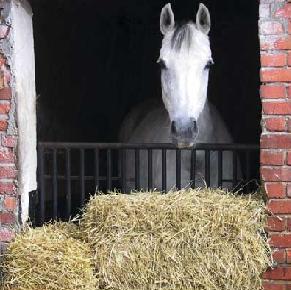You can distinguish grass hay from a legume by looking at the stalks and leaves. Grass hays grow tall with upright stalks and long, slender leaves that surround the stalk itself rather than branching out on the stems the way that legume leaves do.
Legume stalks are often coarser and the leaves are less firmly attached, which leads to increased wastage after harvest when dry leaves tend to shatter and crumble out of the bale. The seed heads of grass hays vary a great deal from the narrow, cattail-like structures of timothy to the branched tree-like fronds of bluegrass and orchardgrass or the elaborate tufts of brome.
Some grasses create a thick, underlying carpet of roots with connecting runners called rhizomes. These protect the ground from water runoff and traffic damage, making them a preferred crop for pastures.
There are considerable advantages to growing grass and legume hays together:
- Because horses consider legumes to be tops in the palatability sweepstakes, combining the two may encourage a horse who would turn his nose up at straight grass hay to consume a mixed flake.
- A lower-protein grass hay may help balance out the high protein level of a legume. They also create bales that are appropriate to feed to mature horses and are more marketable for the farmer.
- The addition of nitrogen-producing legumes to a grass helps fertilize the field and increases the grass hay yield. Mixed hay is often the preferred feed for horses, although the mix may be composed of a number of combinations of legumes and grasses based on the climate, soil type and demand.








Post a comment
Report Abusive Comment